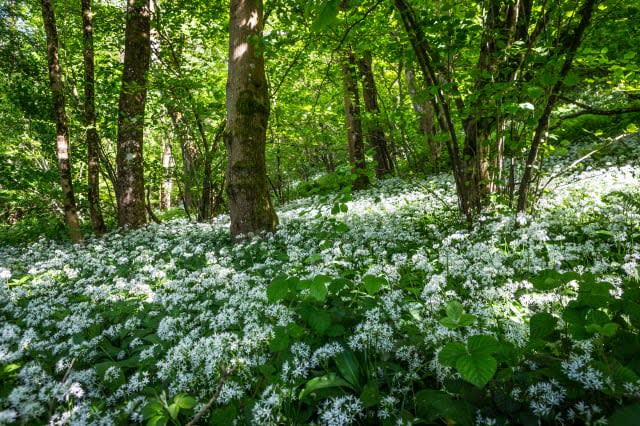Foraging wild spring foods for free

Everyone loves getting something for free, but it's a bonus if it's tasty and unusual as well. Autumn brings berries and mushrooms but you don't have to wait until later in the year, you can forage delicious natural foods way before then.
It goes without saying that you should always take care to make sure you've identified the plant correctly and be careful to wash and drain your finds thoroughly before using.
Sea vegetables
Sea beet (related to Swiss chard and beetroot) can be found near the shoreline on shingle beaches. It can be used in recipes in place of spinach. The same location may also yield some sea kale which has very tasty flower buds that can be steamed – a little like broccoli.
Leaves
Wild garlic, also known as ransoms, can often be found in shady wooded areas - often alongside bluebells. Look out for its delicate white flowers and shiny green leaves (and distinctive garlicky smell when you bend the leaves). It's extremely adaptable and can be made into soup or pesto, added to stir-fries, risotto, omelettes, pasta dishes and quiches. A little goes a long way so only pick the smallest tenderest leaves and flowers.
Nettles can also be made into pesto and served with tagliatelle or any other pasta. Again, pick young, tender leaves (using gloves to protect your hands until cooked), and use in place of spinach. If you don't want to cook with them, they can also be made into liquid plant food for the garden by letting them rot down in a bucket with a little water.
Sorrel (featured in the video above) is extremely adaptable and as well as making an excellent flavouring for potatoes, can also be made into pesto or soup. Like other tender leaves, it can also be made into salsa verde to be served with meat or fish. Look out for it in grassland areas.
Flowers
Dandelion leaves are edible but they can be too bitter for some, so why not try the flowers instead? Like elderflowers, they can be lightly battered before frying. They can also be used to make wine.
Like dandelions, all parts of the mallow plant are edible. The flowers bloom in late summer, but in spring, the tender young leaves are perfect for adding to a salad
Elderflowers themselves can also be made into elderflower cordial or wine or used as fragrant edible cake decorations. They can also be added to poached pears.
More recipes with foraged spring foods:
How to make tea with water mint
Blackberry frozen yoghurt
Snails in a chilli and rosemary-infused oil
Wild and fresh mushroom soup
More spring foods:
River Café's fried violetta artichokes
Healthy salmon spring salad
Salmon with Puy lentils and parsley
Fresh salad greens you can grow yourself
More food know-how:
Is fillet steak better than sirloin?
How to use up storecupboard ingredients
Cheap ways to get your five-a-day
Eight delicious things to do with the life-giving leek



